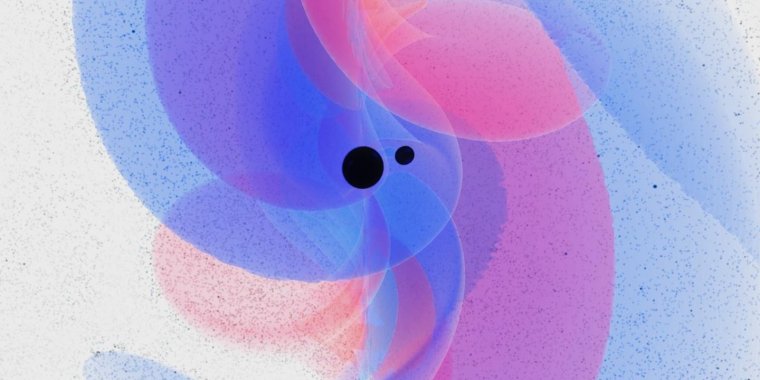| News / Science News |
Observing 'black hole symphony' using gravitational wave astronomy
Limitations in observation technologies have kept scientists from grasping a more complete picture of black holes. One of the largest gaps lies in a certain type of black hole: intermediate-mass black holes that fall between supermassive (at least a million times greater than our sun) and stellar (smaller, though still 5 to 50 times greater than the mass of our sun) black holes.

A snapshot of the 3D gravitational waveform from a simulation of binary black holes. Photo: Jani, K., Kinsey, M., Clark, M./Center for Relativistic Astrophysics/Georgia Institute of Technology
That could soon change, according to new simulations conducted by a team at Vanderbilt University, Georgia Tech, California Institute of Technology, and the Jet Propulsion Laboratory, on what's next for gravitational wave astronomy.
The study presents a roadmap for capturing 4-to-10-year snapshots of intermediate-mass black hole activity using both ground- and upcoming space-based detection instruments, including NSF's Laser Interferometer Gravitational-Wave Observatory.
"As a symphony orchestra emits sound across an array of frequencies, the gravitational waves emitted by black holes occur at different frequencies and times," said lead author Karan Jani of Vanderbilt University. "Some of these frequencies are extremely high-bandwidth, while some are low-bandwidth. Our goal in the next era of gravitational wave astronomy is to capture multiband observations of these frequencies to 'hear the entire song,' as it were, when it comes to black holes."
The possibility that intermediate mass black holes exist but are currently hidden from our view is both tantalizing and frustrating, according to Deidre Shoemaker of Georgia Tech, a co-author of the paper.
"A confirmation of intermediate black holes' existence, or lack of, will have profound implications for our understanding of the formation of supermassive black holes and the dynamics of the galaxies that host them," said Pedro Marronetti, a program director in NSF's Division of Physics. (National Science Foundation)
YOU MAY ALSO LIKE





